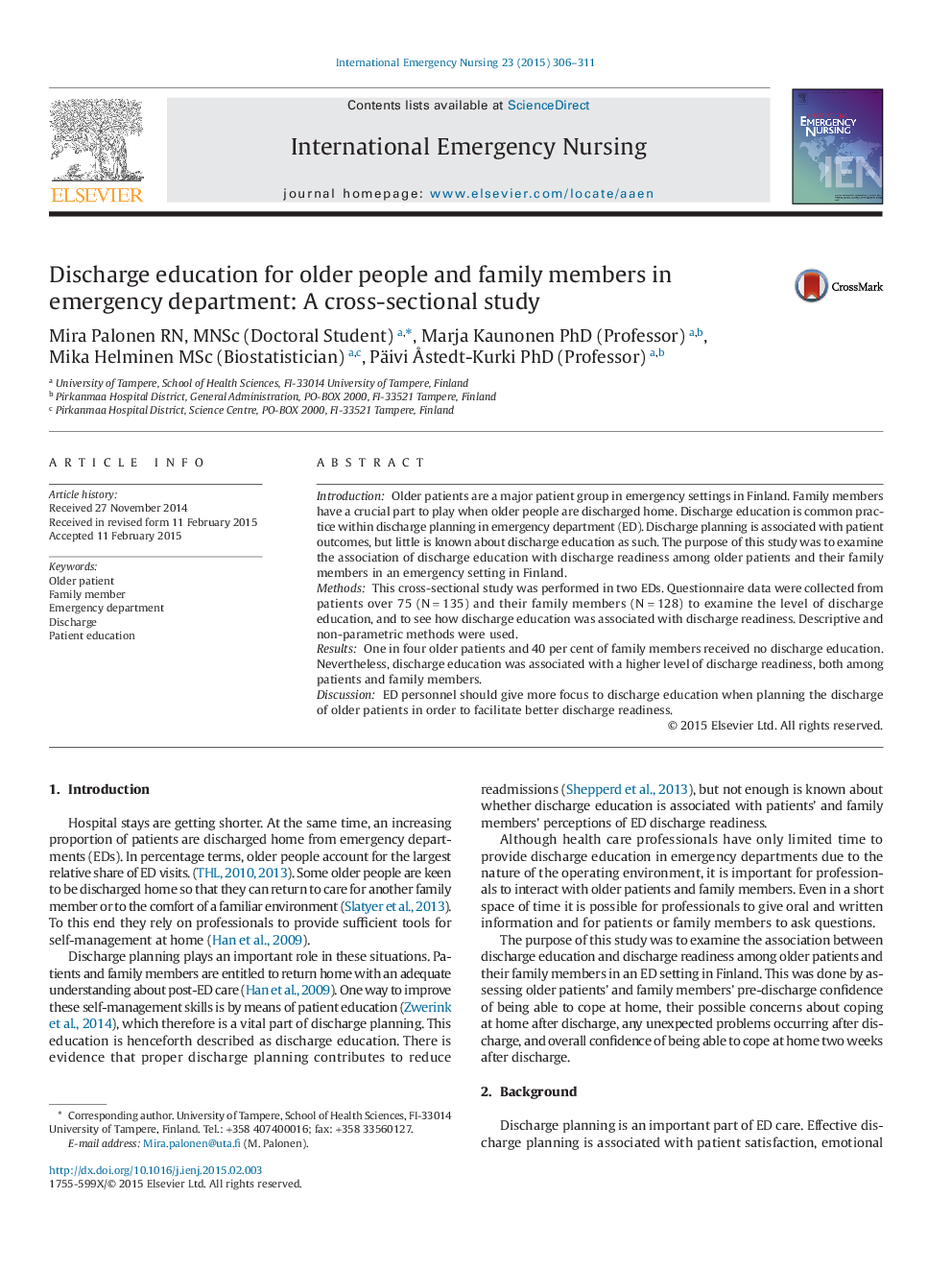| Article ID | Journal | Published Year | Pages | File Type |
|---|---|---|---|---|
| 2608140 | International Emergency Nursing | 2015 | 6 Pages |
•Older patients and family members receive little ED discharge education.•Discharge education is associated with higher ED discharge readiness.•More focus should be given to discharge education for family members.
IntroductionOlder patients are a major patient group in emergency settings in Finland. Family members have a crucial part to play when older people are discharged home. Discharge education is common practice within discharge planning in emergency department (ED). Discharge planning is associated with patient outcomes, but little is known about discharge education as such. The purpose of this study was to examine the association of discharge education with discharge readiness among older patients and their family members in an emergency setting in Finland.MethodsThis cross-sectional study was performed in two EDs. Questionnaire data were collected from patients over 75 (N = 135) and their family members (N = 128) to examine the level of discharge education, and to see how discharge education was associated with discharge readiness. Descriptive and non-parametric methods were used.ResultsOne in four older patients and 40 per cent of family members received no discharge education. Nevertheless, discharge education was associated with a higher level of discharge readiness, both among patients and family members.DiscussionED personnel should give more focus to discharge education when planning the discharge of older patients in order to facilitate better discharge readiness.
